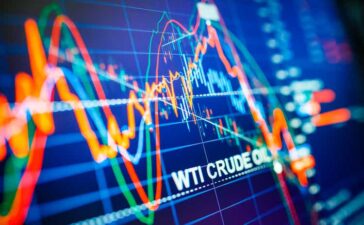Unlock the Editor’s Digest for free
Roula Khalaf, Editor of the FT, selects her favourite stories in this weekly newsletter.
The inflows into 11 new bitcoin exchange traded funds that received US regulatory approval in January went into reverse this week. Investors will be watching daily data to see if the $850mn that leaked out of the ETFs was a blip, or a harbinger of a bigger pullback for the world’s biggest cryptocurrency.
The flows had helped propel the price of the cryptocurrency to a record high of $73,000 this year. But a pullback in its price in recent days has hit investor enthusiasm for the ETFs. At one point this week, bitcoin fell as low as $60,760.
“People have looked at how much the price of bitcoin has fallen and they’ve decided to hold off, nobody wants to catch a falling knife,” said James Butterfill, head of research at crypto investment group CoinShares.
BlackRock, the world’s largest asset manager, registered inflows of $576mn this week, while rival products issued by firms including Fidelity, Invesco and Franklin Templeton have had minimal new money come in.
These flows have been offset by persistent investor withdrawals at Grayscale. The asset manager converted its long-standing bitcoin trust into an ETF in January, but the product carries a much higher management fee than its competitors.
“We’re approaching a dead zone for these ETF products where the initial frenzy of pent-up capital has come in already,” said Ilan Solot, senior global markets strategist at Marex.
Bitcoin traders will also have one eye on the so-called halving, a network update scheduled for April that will halve the financial rewards for miners that verify new transactions on the network.
The event, which happens every four years, is expected to push bitcoin’s price up in the long term, analysts say. Scott Chipolina
Will progress on the Fed’s preferred measure of inflation stall?
The US Federal Reserve’s preferred measure of inflation is expected to show no progress was made in reducing price growth in February, underscoring how much work the central bank still has to reach its 2 per cent target.
On Friday, the Bureau of Economic Analysis will release February’s personal consumption expenditures index data. The headline PCE index is expected to have risen 2.5 per cent year on year, according to economists surveyed by Bloomberg, up from the 2.4 per cent rate recorded in January. The core measure, which strips out the volatile food and energy sectors and is the one most closely watched by the Fed, is expected to come in at 2.8 per cent, the same rate as the previous month.
The data comes in the wake of higher than expected consumer price inflation numbers for February, which showed that headline inflation increased to 3.2 per cent last month, up from 3.1 per cent in January.
Above-forecast inflation numbers in January and February have lowered market expectations of the number of times the Fed will cut interest rates this year. In January, traders were betting on six quarter-point cuts by December. That figure is now about three, in line with the Fed’s own expectations.
Fed officials this week raised their forecasts for where core PCE would be by year-end to 2.6 per cent, from the previous forecast of 2.4 per cent. Despite the rise in expected inflation, officials still anticipated 0.75 percentage points of cuts this year. Kate Duguid
Does the gold rally have further to go?
The price of gold has surged this month in a blistering rally without an obvious individual trigger that left some analysts baffled.
After big gains earlier this month the yellow metal has been trading close to the $2,200 per troy ounce mark, and even briefly rose as high as $2,222 on Wednesday. Traders are on alert for signs that the asset has become overbought and might be due a correction, or for confirmation that there are solid reasons for its strength or that it could move higher.
Analysts have pointed to various factors for gold’s recent strength, including rising expectations of interest rate cuts from the US Federal Reserve, continued geopolitical tensions in Ukraine and the Middle East, record levels of central bank buying and strong retail demand.
Some argue, however, that current prices are unsustainable without an actual fall in interest rates, which would make the non-yielding asset more attractive. Others note that, although gold has hit record levels in nominal terms, prices remain well below their inflation-adjusted peak of more than $3,000.
Ewa Manthey, a commodities strategist at ING, said the rally still “has further to go”. She highlighted the continued strength of demand for gold as a safe-haven asset amid conflict in Ukraine and the Middle East and ahead of the US election.
Continued buying from investors chasing the gold rally could “push prices to a fresh record”, she added.
Changing expectations of rate cuts are likely to be the biggest risk to the rally, say analysts. Future economic data releases, which guide monetary policy expectations, could bring fresh volatility. Stephanie Stacey








